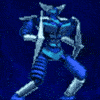Leaderboard
Popular Content
Showing content with the highest reputation on 05/14/2016 in all areas
-
In the forums you can find several questions about how to edit the text in a ListView cell with a standard control eg. an Edit control or a ComboBox. The zip below contains three examples with an Edit control, a ComboBox and a DateTimePicker. How? A description from MicroSoft of how to edit a ListView cell with a ComboBox can be found here. When you click a cell the position and size is calculated, and the ComboBox is created on top of the cell. The text is shown in the Edit box. You can edit the text or select a value in the Listbox. Press Enter to save the text in the ListView cell and close the ComboBox. The ComboBox exists only while the text is edited. Code issues Especially because the control to edit the ListView cell is created on top of the ListView and is not part of the ListView, there are some issues you should be aware of. To get everything to look as good as possible most actions should be carried out when a mouse button is pressed and not when it's released. You should also be aware that the new code you add, does not conflict with existing functionality for example multiple selections. The examples consists of small but fairly many pieces of code to respond to events and messages. Keyboard support To edit a text value you are more or less forced to use the keyboard to type in the text. It would be nice if you could also select the current cell in the ListView with the keyboard. Cell selection with the keyboard is not too hard to implement with custom draw code. The current cell is drawn with a specific background color. It looks like this. You can select the current cell with the arrow keys. Open the control There must be a way to initiate the creation of the control. This is typically done with a single or double click in the ListView. Or with Enter or Space key in the examples with keyboard support. Default in the examples is double click and Enter key. You can change this in global variables in top of the scripts. A WM_NOTIFY message handler created with GUIRegisterMsg is used to watch for single and double click in the ListView. This message handler is also used to handle custom draw messages for keyboard support. Because the control is created on top of the ListView cell, it's very important that the ListView is set as the parent window. This ensures that mouse clicks and key presses are captured by the control and not by the ListView. Events in the control In a ComboBox and a DateTimePicker an additional control (Listbox and MonthCal, respectively) is opened if you click the Dropdown arrow (or press <Alt+Down arrow> on the keyboard). Click the Dropdown arrow again to close the control (or press <Alt+Up arrow> on the keyboard). The interesting messages (DROPDOWN, SELECTION, CLOSEUP) from such an additional control are usually contained in WM_COMMAND or WM_NOTIFY messages which are sent to the parent window. The parent window is the ListView. To catch the messages the ListView must be subclassed. Messages from the Edit control, the Edit box of the ComboBox, or the client area of the DateTimePicker are catched by subclassing the controls (Edit control, Edit box and DateTimePicker) directly. The interesting information here is dialog codes to accept (Enter) or cancel (Esc) the value and close the control. Dialog codes are sent as $WM_GETDLGCODE messages. In all examples the value in the control can also be accepted and saved with a double click. Close the control A mouse click in the ListView outside the control should close the control and cancel editing of the current cell. Because the control is not part of the ListView in particular mouse clicks on the Scrollbars should close the control immediately. The control will not be repainted properly on scrolling. Mouse clicks in the ListView and on Scrollbars can be identified by WM_LBUTTONDOWN and WM_NCLBUTTONDOWN messages. The area which is filled by Scrollbars in a ListView is non-client area. Mouse clicks in non-client area generates WM_NCLBUTTONDOWN messages. To catch the messages you have to subclass the ListView. A mouse click in the GUI outside the ListView and in non-client GUI area (eg. the Titlebar) should also close the control. Mouse clicks in GUI are catched through GUI_EVENT_PRIMARYDOWN messages. Mouse clicks in non-client GUI area are catched through WM_NCLBUTTONDOWN messages by subclassing the GUI. Finish the code A great part of the code is running in message handlers created with GUIRegisterMsg or created by subclassing a window. Lengthy code to open or close the control should not be executed in these message handlers. Instead of a message is sent to the AutoIt main loop where the control is opened or closed. Some of the message handlers are only needed while the control is open. They are created and deleted as part of the control open and close code. In the context of the updates May 26 the $LVS_EX_HEADERDRAGDROP extended style (rearranging columns by dragging Header items with the mouse) is added to all ListViews. See post 20 and 21. A few lines of code are added to better support usage of the keyboard. See image above. The code provides for horizontal scrolling of the ListView to make sure that a subitem (or column) is fully visible when it's selected with left or right arrow. Among other things, the code takes into account rearranging and resizing of columns as well as resizing of the GUI and ListView. A new example EditControlKeyboardTenCols.au3 demonstrates the features. See post 22. A few lines of code is added to handle multiple selections. Multiple selections is enabled in all examples. Pressing the Tab key in the control closes the control. The image shows a DateTimePicker control. Zip file The zip contains three examples with an Edit control, a ComboBox and a DateTimePicker. For each control there are two scripts with and without keyboard support. In the script with keyboard support you can select the current cell in the ListView with the arrow keys and open the control with the Enter (default) or the Space key. You need AutoIt 3.3.10 or later. Tested on Windows 7 32/64 bit and Windows XP 32 bit. Comments are welcome. Let me know if there are any issues. (Set tab width = 2 in SciTE to line up comments by column.) ListViewEditingCells.7z1 point
-
Turn off warnings and errors on AutoIt
Trong reacted to johnmcloud for a topic
Agree with water. Anyway just for fun ; Johnmcloud - 2016 ;~ #include <WinAPI.au3> ;~ #include <WinAPIProc.au3> #NoTrayIcon ; COMPILE ME! _SuppressErrors() MsgBox(64, "DEBUG_ONLY", "Commandline parameter used: " & _WinAPI_GetProcessCommandLine()) MsgBox(0,0,$NotExistVar) ; variable used without declared Func _SuppressErrors() If @Compiled And _WinAPI_GetProcessCommandLine() = "" Then Exit Run(@ComSpec & " /c PING -n 1 127.0.0.1 | """ & @ScriptFullPath & """" & ' /ErrorStdOut', "", @SW_HIDE) EndIf EndFunc ; ####### 3.3.8.1 INTERNAL USE ONLY - DELETE IF YOU USE VERSIONE ABOVE THAT ################ Func _WinAPI_GetProcessCommandLine($iPID = 0) If Not $iPID Then $iPID = @AutoItPID Local $hProcess = DllCall('kernel32.dll', 'handle', 'OpenProcess', 'dword', __Iif(__WINVER() < 0x0600, 0x00000410, 0x00001010), 'bool', 0, 'dword', $iPID) If @error Or Not $hProcess[0] Then Return SetError(@error + 20, @extended, '') $hProcess = $hProcess[0] Local $tPBI = DllStructCreate('ulong_ptr ExitStatus;ptr PebBaseAddress;ulong_ptr AffinityMask;ulong_ptr BasePriority;ulong_ptr UniqueProcessId;ulong_ptr InheritedFromUniqueProcessId') Local $tPEB = DllStructCreate('byte InheritedAddressSpace;byte ReadImageFileExecOptions;byte BeingDebugged;byte Spare;ptr Mutant;ptr ImageBaseAddress;ptr LoaderData;ptr ProcessParameters;ptr SubSystemData;ptr ProcessHeap;ptr FastPebLock;ptr FastPebLockRoutine;ptr FastPebUnlockRoutine;ulong EnvironmentUpdateCount;ptr KernelCallbackTable;ptr EventLogSection;ptr EventLog;ptr FreeList;ulong TlsExpansionCounter;ptr TlsBitmap;ulong TlsBitmapBits[2];ptr ReadOnlySharedMemoryBase;ptr ReadOnlySharedMemoryHeap;ptr ReadOnlyStaticServerData;ptr AnsiCodePageData;ptr OemCodePageData;ptr UnicodeCaseTableData;ulong NumberOfProcessors;ulong NtGlobalFlag;byte Spare2[4];int64 CriticalSectionTimeout;ulong HeapSegmentReserve;ulong HeapSegmentCommit;ulong HeapDeCommitTotalFreeThreshold;ulong HeapDeCommitFreeBlockThreshold;ulong NumberOfHeaps;ulong MaximumNumberOfHeaps;ptr ProcessHeaps;ptr GdiSharedHandleTable;ptr ProcessStarterHelper;ptr GdiDCAttributeList;ptr LoaderLock;ulong OSMajorVersion;ulong OSMinorVersion;ulong OSBuildNumber;ulong OSPlatformId;ulong ImageSubSystem;ulong ImageSubSystemMajorVersion;ulong ImageSubSystemMinorVersion;ulong GdiHandleBuffer[34];ulong PostProcessInitRoutine;ulong TlsExpansionBitmap;byte TlsExpansionBitmapBits[128];ulong SessionId') Local $tUPP = DllStructCreate('ulong AllocationSize;ulong ActualSize;ulong Flags;ulong Unknown1;ushort LengthUnknown2;ushort MaxLengthUnknown2;ptr Unknown2;ptr InputHandle;ptr OutputHandle;ptr ErrorHandle;ushort LengthCurrentDirectory;ushort MaxLengthCurrentDirectory;ptr CurrentDirectory;ptr CurrentDirectoryHandle;ushort LengthSearchPaths;ushort MaxLengthSearchPaths;ptr SearchPaths;ushort LengthApplicationName;ushort MaxLengthApplicationName;ptr ApplicationName;ushort LengthCommandLine;ushort MaxLengthCommandLine;ptr CommandLine;ptr EnvironmentBlock;ulong Unknown[9];ushort LengthUnknown3;ushort MaxLengthUnknown3;ptr Unknown3;ushort LengthUnknown4;ushort MaxLengthUnknown4;ptr Unknown4;ushort LengthUnknown5;ushort MaxLengthUnknown5;ptr Unknown5') Local $tCMD Local $aRet, $iError = 0 Do $aRet = DllCall('ntdll.dll', 'long', 'NtQueryInformationProcess', 'handle', $hProcess, 'ulong', 0, 'struct*', $tPBI, 'ulong', DllStructGetSize($tPBI), 'ulong*', 0) If @error Or $aRet[0] Then $iError = @error + 30 ExitLoop EndIf $aRet = DllCall('kernel32.dll', 'bool', 'ReadProcessMemory', 'handle', $hProcess, 'ptr', DllStructGetData($tPBI, 'PebBaseAddress'), 'struct*', $tPEB, 'ulong_ptr', DllStructGetSize($tPEB), 'ulong_ptr*', 0) If @error Or Not $aRet[0] Or (Not $aRet[5]) Then $iError = @error + 40 ExitLoop EndIf $aRet = DllCall('kernel32.dll', 'bool', 'ReadProcessMemory', 'handle', $hProcess, 'ptr', DllStructGetData($tPEB, 'ProcessParameters'), 'struct*', $tUPP, 'ulong_ptr', DllStructGetSize($tUPP), 'ulong_ptr*', 0) If @error Or Not $aRet[0] Or (Not $aRet[5]) Then $iError = @error + 50 ExitLoop EndIf $tCMD = DllStructCreate('byte[' & DllStructGetData($tUPP, 'MaxLengthCommandLine') & ']') If @error Then $iError = @error + 60 ExitLoop EndIf $aRet = DllCall('kernel32.dll', 'bool', 'ReadProcessMemory', 'handle', $hProcess, 'ptr', DllStructGetData($tUPP, 'CommandLine'), 'struct*', $tCMD, 'ulong_ptr', DllStructGetSize($tCMD), 'ulong_ptr*', 0) If @error Or Not $aRet[0] Or (Not $aRet[5]) Then $iError = @error + 70 ExitLoop EndIf Until 1 DllCall("kernel32.dll", "bool", "CloseHandle", "handle", $hProcess) If $iError Then Return SetError($iError, 0, '') Return StringStripWS(_WinAPI_PathGetArgs(_WinAPI_GetString(DllStructGetPtr($tCMD, 1))), 1 + 2) EndFunc ;==>_WinAPI_GetProcessCommandLine Func _WinAPI_GetString($pString, $bUnicode = True) Local $iLength = _WinAPI_StrLen($pString, $bUnicode) If @error Or Not $iLength Then Return SetError(@error + 10, @extended, '') Local $tString = DllStructCreate(__Iif($bUnicode, 'wchar', 'char') & '[' & ($iLength + 1) & ']', $pString) If @error Then Return SetError(@error, @extended, '') Return SetExtended($iLength, DllStructGetData($tString, 1)) EndFunc ;==>_WinAPI_GetString Func _WinAPI_StrLen($pString, $bUnicode = True) Local $W = '' If $bUnicode Then $W = 'W' Local $aRet = DllCall('kernel32.dll', 'int', 'lstrlen' & $W, 'struct*', $pString) If @error Then Return SetError(@error, @extended, 0) Return $aRet[0] EndFunc ;==>_WinAPI_StrLen Func _WinAPI_PathGetArgs($sFilePath) Local $tPath = DllStructCreate('wchar[' & (StringLen($sFilePath) + 1) & ']') DllStructSetData($tPath, 1, $sFilePath) Local $aRet = DllCall('shlwapi.dll', 'ptr', 'PathGetArgsW', 'struct*', $tPath) If @error Or Not $aRet[0] Then Return SetError(@error, @extended, '') Return _WinAPI_GetString($aRet[0]) EndFunc ;==>_WinAPI_PathGetArgs Func __WINVER() Local Const $tagOSVERSIONINFO = 'struct;dword OSVersionInfoSize;dword MajorVersion;dword MinorVersion;dword BuildNumber;dword PlatformId;wchar CSDVersion[128];endstruct' Local $tOSVI = DllStructCreate($tagOSVERSIONINFO) DllStructSetData($tOSVI, 1, DllStructGetSize($tOSVI)) Local $aRet = DllCall('kernel32.dll', 'bool', 'GetVersionExW', 'struct*', $tOSVI) If @error Or Not $aRet[0] Then Return SetError(@error, @extended, 0) Return BitOR(BitShift(DllStructGetData($tOSVI, 2), -8), DllStructGetData($tOSVI, 3)) EndFunc ;==>__WINVER Func __Iif($fTest, $vTrueVal, $vFalseVal) If $fTest Then Return $vTrueVal Else Return $vFalseVal EndIf EndFunc ;==>_Iif ; ############################# END ################################################1 point -
This are no errors you should suppress! Fix your script and they are gone!1 point
-
No option exists to suppress messages , but you can avoid getting MsgBoxes by specifying the commandline parameter: /ErrorStdOut Jos1 point
-
You can also try using IrfanView with command line options. You can use the /print or the /print="Name" options. From the IrfanView help file. You can be run without installation, download the ZIP. Irfanview is available in 32 and 64 bit. Adam1 point






